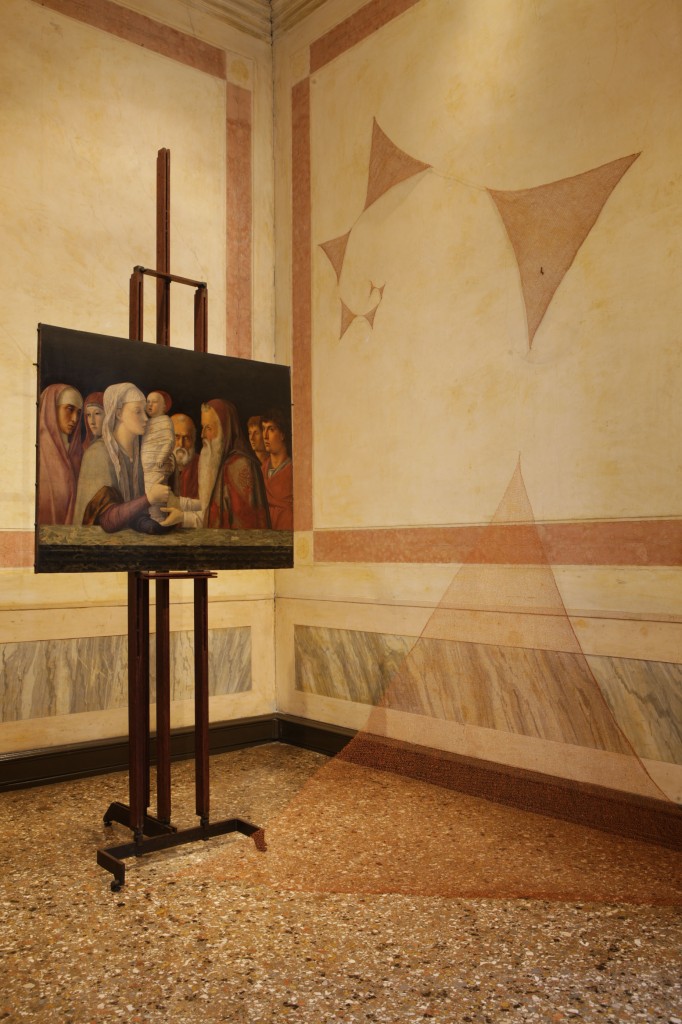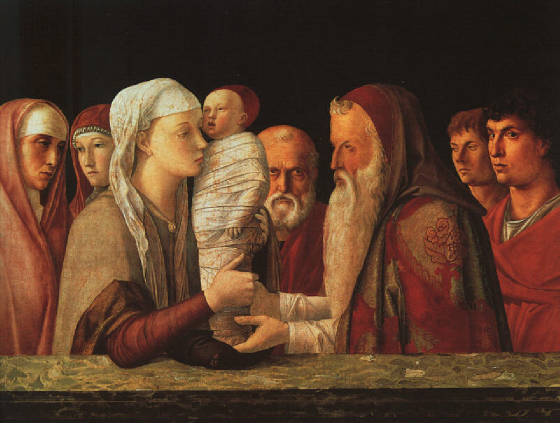|

Marisa Merz, Installation, 2011 Galleria
Querini Stampalia, Venice

Giovanni Bellini, The Presentation at the Temple, 1459
Galleria
Querini Stampalia, Venice
I hope all
our friends on the East Coast are now safe and dry and have electricity. Our
thoughts and hearts go out to any who have experienced loss. I hope you are all
okay and are finding your way back to your lives before the storm.
Compassion
and connectedness to the human spirit are pronounced in the work of Marisa
Merz. Many know the work of her spouse, Mario Merz; although
Marisa was also affiliated with Arte Povera, her work is perhaps more direct
and filled with humanity. I was able to see the first part of the exhibition
our contributor Floriana Piqué discusses in Venice at the during last biennial
of Fondazione Querini Stampalia in 2011. There Merz paired her
sculptures made of triangular shapes that spiral from the floor to wall--arabesque shapes made of gauzelike
material--with one of the most tender paintings in the collection, Bellini’s Presentation
in the Temple. She does this with many of her works to create a kind of
poetic juxtaposition, producing an effect of surreality. The second part of the
exhibition is
currently at the Foundation Merz in Turin; Floriana has generously shared her
thoughts on the works there.
We are but a speck of dusk relative to the eternal works in the
exhibition Bronze at the Royal Academy in London. I cannot help but think about
the passing centuries represented by the work in this exhibition, so
sensitively written about by Anna Leung. As always, she provides the reader
with a window into the time and space of the art objects through clear and
precise description.
And if I understand anything about poetry, it is its ability to stay
with us, whether an entire poem or a particular phrase. It has the power to
make us see, think, feel, and remember. I am delighted that Marc Strauss has
joined the list of poets who have generously lent us their work and voices.
Marc is a doctor who has written such vividly wonderful medical poems. Retired
from medicine, he now enjoys a new life as an art dealer (for the second time)
with a new space on the lower East Side of New York City. We offer six of his
poems about art and artists, presented in a voice that is alternately comic and
ribald or meditative, but always evocative.
In the aftermath of the storm, it is good to reflect on art that will
last, whether in bronze, or debris reconfigured as Arte Povera, or in words
assembled to make a poem. Art will always be there to complete us.
Thank you all,
Deanna
Deanna
Sirlin Editor-in-Chief The Art Section 
|
